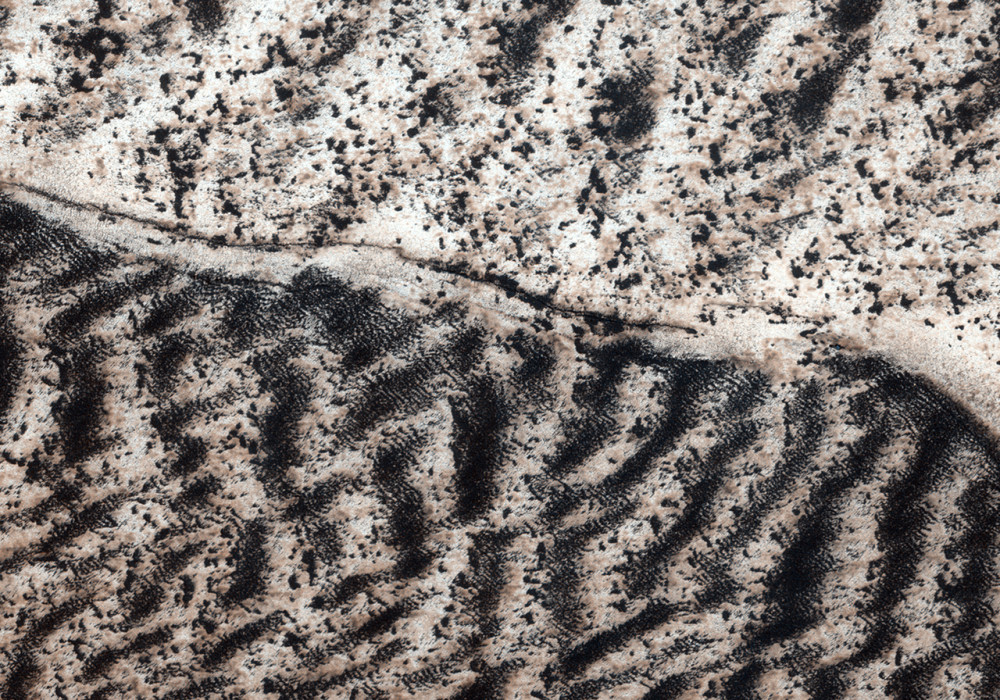Sand moves along a planetary surface by a process scientists call “saltation,” whereby the individual grains are driven by the wind and bounce forward in short hops. In a process that is not yet completely understood, sheets of saltating sand grains organize themselves into sand dunes, visible in this image as the dark features.
Sand dunes move by having the wind push sand grains up and over the top of the dune where they then slide down to the base. The steep side of the dune that the sand grains slide down is called the slip-face and it is the constant transport of sand from the downwind side of the dune to the slip-face that makes the dune move forward in this direction. HiRISE data allow us to see which side of these dunes has the steeper slope (the slip-face), telling us what direction the dune—and strong near surface winds—are moving (in this case the slip-faces point almost directly to the left).
Yet something else is also happening to these particular dunes. Dark streaks lead away from the dunes toward the lower left of the image. These streaks are caused by sand grains being blown off the dunes and saltating away. This is not ordinarily a cause for concern because in a stable dune, individual grains are constantly added and removed; however, there does not appear to be any influx of sand upwind of these dunes, so they are probably being eroded.
It is also interesting that these streaks do not point in the same direction as the slip-face. One possible scenario is that the dunes migrated westward when sand supply was more plentiful. Today, the wind direction has shifted, blowing more toward the southwest, and the influx of new sand has ceased, such that in the future, the dunes will completely erode away. Repeated HiRISE observations will be able to look for changes in the shape and size of these dunes.
Written by: Shane Bryne (31 August 2008)
More info and image formats at http://hirise.lpl.arizona.edu/PSP_009114_2645
Image: NASA/JPL/University of Arizona
